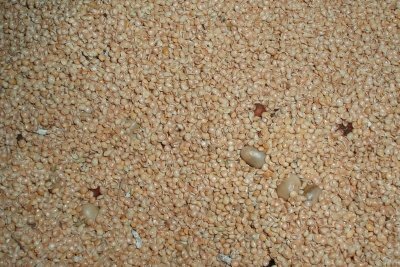Millet and its nutritional value
Millet is a very special grain. The nutritional value of millet is remarkably high. In particular, the nutritional value of the minerals in millet is unsurpassed. Marvel at this valuable grain here.

Millet is as grain out of fashion. Because of the high nutritional values, the grain should have a permanent place in the menu.
Millet - old grain with high nutritional value
- Millet has been used by humans for at least 8,000 years nourishment utilized. Millet is therefore the oldest food grain. Millet, like wheat and all other grains, is also a sweet grass. The high nutritional values of millet were one of the reasons why millet has been consumed as the most important grain for so long.
- Millet flakes, which are prepared in the same way as oat flakes, contain 354 kcal per 100 grams. Oat flakes, on the other hand, contain 370 kcal.
- Millet flakes contain vitamins B1 to B9 as well as vitamin E. Magnesium is very high at 170 milligrams per 100 grams of millet flakes. Calcium, iron, zinc and copper also have a permanent place in millet flakes.
The nutritional values of millet flour
- Millet flour has 345 kcal per 100 grams of flour. Type 405 wheat flour has only minimally fewer calories. With 337 kcal per 100 grams of flour, there is hardly any difference between millet and wheat flour.
- Millet flour provides you with 250 micrograms of vitamin B1, while wheat flour only gives you 60 micrograms.
- The nutritional value of the old grain for vitamin B2 is 190 micrograms per 100 grams of flour. You get just 30 micrograms of the same amount of wheat flour. Millet flour also beats modern wheat flour by at least fifty percent when it comes to vitamins B3, B5 and B6.
- The nutritional values of the bulk elements such as magnesium, calcium and potassium in millet flour are almost twice as high as in all other flours currently in use.
Calories on a pretzel stick - interesting facts about the nutritional value of pretzel biscuits
Pretzel sticks are a delicious snack for in between and can also be used anywhere ...
If you want to eat cereal products with a high nutritional density, millet is the first choice for you.
How helpful do you find this article?

